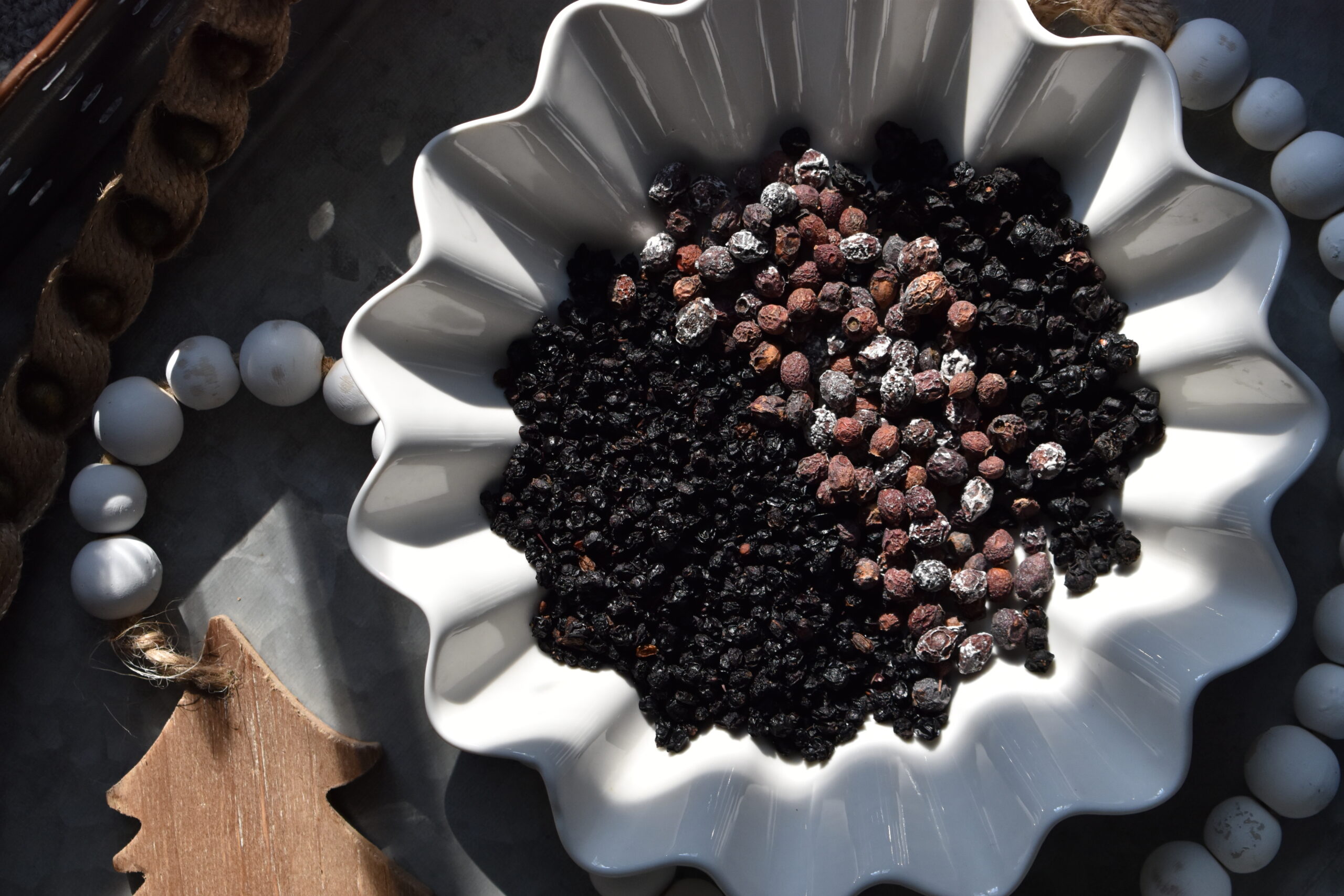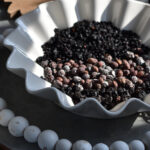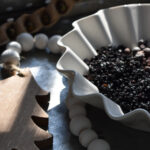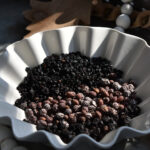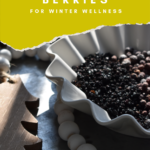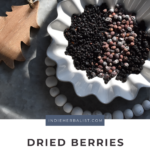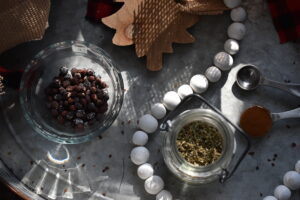Links contained in this post and elsewhere on my website may include affiliate links. When you make a purchase through these links, I earn a commission at no additional cost to you. I only link to products and services that I love - and that I think you will love, too!
Dried berries are a staple ingredient in the winter herbal cupboard. They add flavor and bountiful benefits for cold-weather wellness. These three, especially, are good to keep on hand. Learn about the health benefits of elderberry, hawthorn, and Schisandra berries.
Dried berries and herbalism
Drying is one of the easiest ways to preserve herbs and fruit for the winter months. So it’s no surprise this method was traditionally applied to berries like elderberries, Schisandra, and hawthorn. In addition to providing vitamin C for wellness, each fruit has a unique profile of health benefits.
Winter wellness benefits of elderberries
No discussion of winter wellness is complete without elderberries! These are a classic for home herbalists.
Elder shrubs, Sambucus nigra, produce lacey white clouds of flowers in the summer. Then the dark purple berries form. Fresh berries can have a laxative or emetic effect for some people, so it’s more common to cook them or use them dried.
This berry has a rich, complex taste that shines in many recipes. Their traditional health benefits include lung health and immune support.
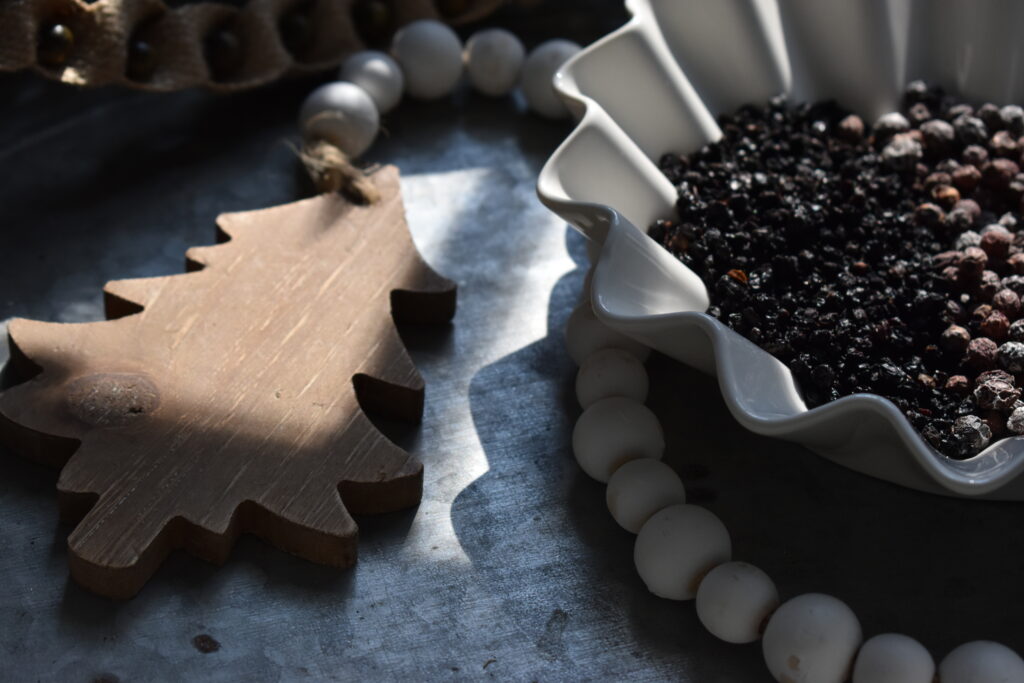
Cold weather health with Schisandra dried berries
Schisandra chinensis vines produce bright red berries that dry to a dark purple. The powdered dried berries are burgundy. Five-flavor berry, the common name for Schisandra, comes from the complex, resinous taste of the fruit.
This herb is not as well known in the West as elderberries. However, it gets a lot of love in Asian herbalism. It’s a staple in Traditional Chinese Medicine and in Korean and Japanese herbalism. Schisandra is an adaptogen with an affinity for the nervous system and the lungs. Another of this herb’s traditional uses is as an astringent when there is excessive sweating, discharge, or urination.
Hawthorn berries for your best health in winter
The traditional name for a hawthorn berry is a haw, and the trees bear long, sharp thorns- hence the name. In the West, Crataegus monogyna and C. laevigata stock our home apothecaries. Chinese hawthorn, C. pinnafitida, has larger fruit than the English hawthorn and is a feature of Traditional Chinese Medicine. Hawthorns produce bright red berries which are harvested after the first frost. The berries dry to a darker red.
This herb is traditionally associated with the heart as a cardiac tonic. In TCM, it is used for restlessness and anxiety. I like using it in the winter because of the way it supports circulation and for its nervine properties.
Dried hawthorn berries tend to develop a white coat over time. This is perfectly normal for them.
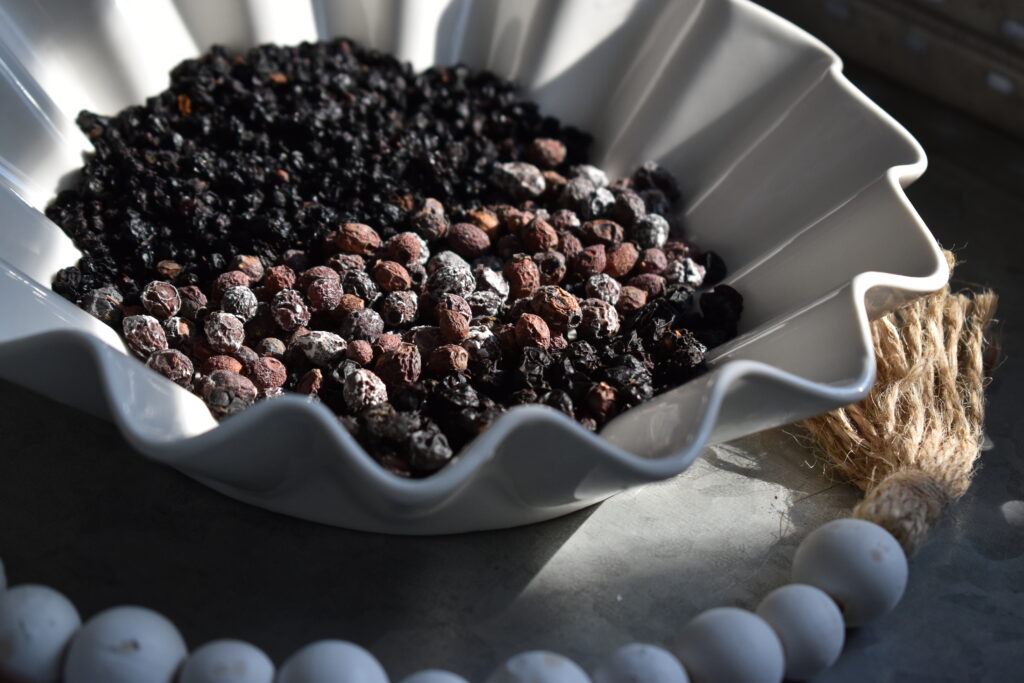
Adding dried berries to your herbal cupboard
Dried berries have a slightly longer shelf life than dried flowers and leaves. The fresher, the better, even dried. In my experience, they are best used within six months to one year.
I do try to use mine before they are a year old. However, I’ve used some that were closer to two years old, and they were still good. For the best shelf life, store them in the dark in an airtight container in a cool place.
Always check your dried berries for a musty smell, faded colors, mold, or dampness. If any of those are present, send them to the compost.
Recipes to enjoy
Elderberry is a flavorful and beneficial tea ingredient in this Mullein and Elderberry Tea Recipe. It features alongside classic lung support herbs for winter wellness.
Most people are familiar with the classic elderberry syrup recipe for winter health. But did you know elderberry and Schisandra complement each other in recipes? Here is an elderberry and schisandra syrup recipe I posted over at my Teacup Alchemy blog.
